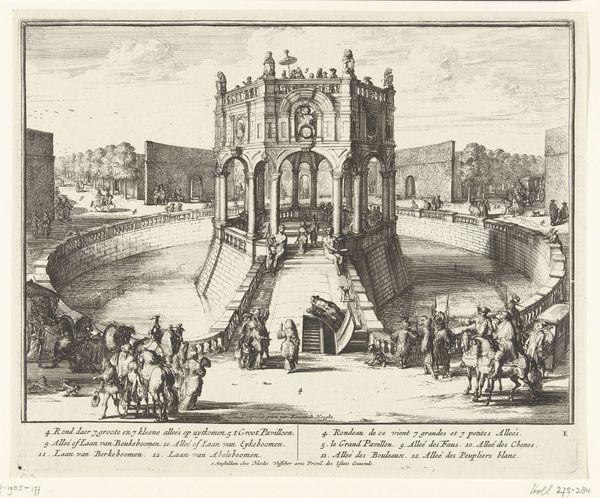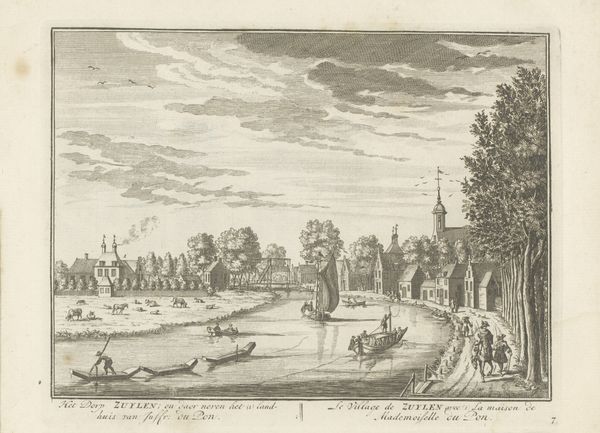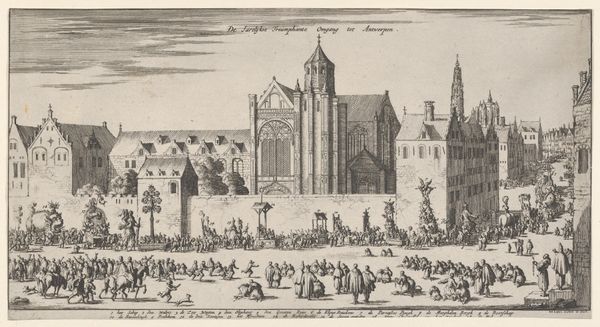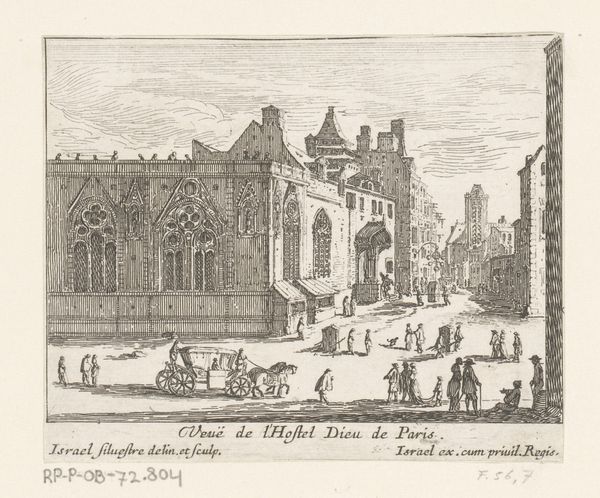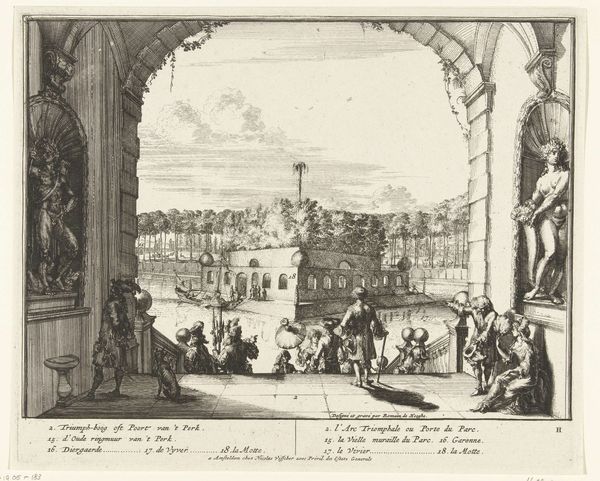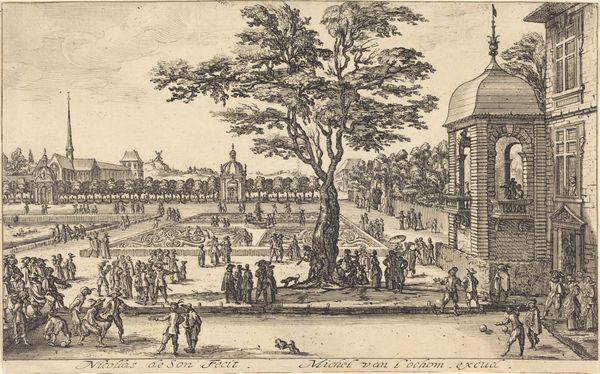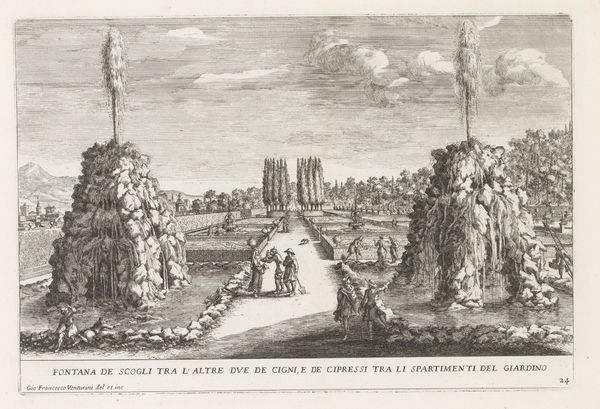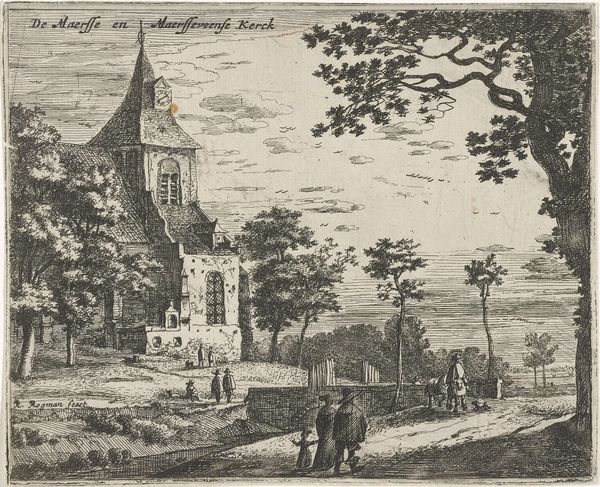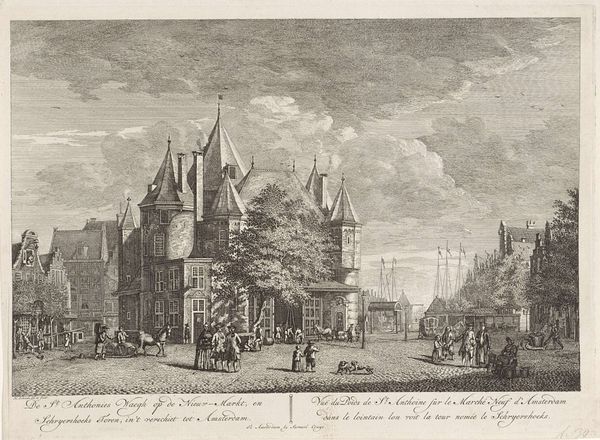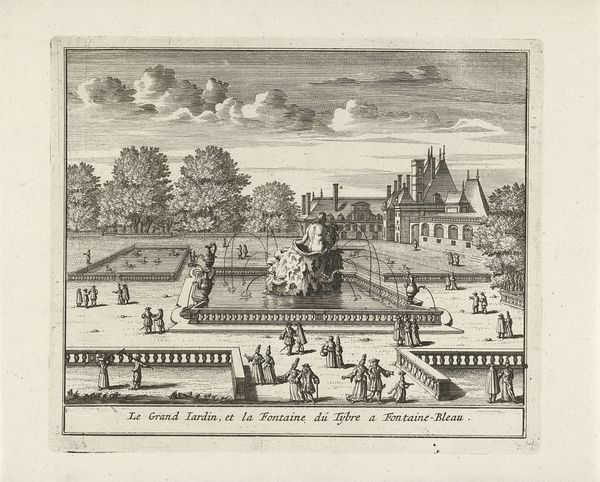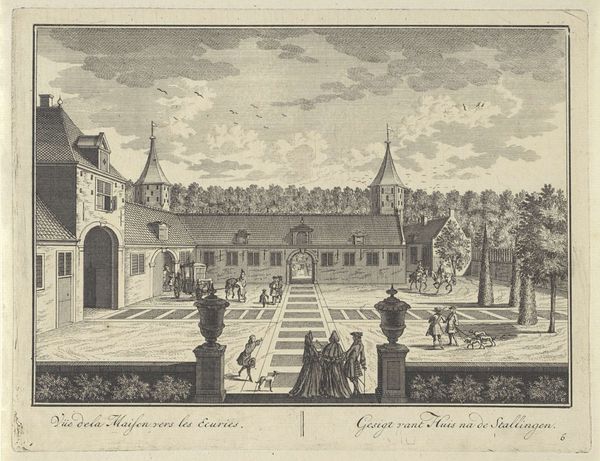
print, engraving
#
baroque
# print
#
landscape
#
park
#
cityscape
#
engraving
Dimensions: height 229 mm, width 283 mm
Copyright: Rijks Museum: Open Domain
This etching of the park of Enghien, was made by Romeyn de Hooghe around the late 17th century. Dominating the scene is a grand pavilion, its architectural form echoing classical ideals of harmony and order. Notice the meticulously arranged trees lining the avenues, a motif stretching back to ancient Roman gardens and reappearing in Renaissance depictions of Arcadia. These allées create a controlled, ordered space, symbolizing man's imposition of structure onto the natural world. But, as in Poussin's landscapes, they also suggest something deeper. This motif has roots in the human desire to tame nature, to create a sanctuary free from the chaos of the outside world. The park then becomes a space for contemplation. It represents a longing for a lost paradise, a theme that endlessly resurfaces in the human psyche. De Hooghe captures not just a physical space, but a manifestation of humanity's eternal quest for order and tranquility.
Comments
No comments
Be the first to comment and join the conversation on the ultimate creative platform.
